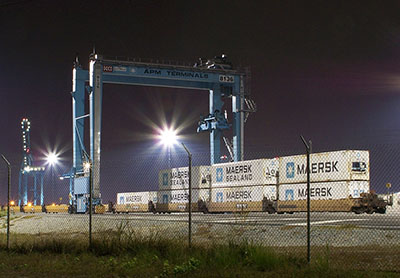2017 U.S. rail carload and intermodal volumes post annual gains
2017 U.S. carloads increased 2.9%, or 381,266 carloads, annually to 13,478,126, compared to 2016’s 13,096,860. Intermodal containers and trailers headed up 3.9%, or 521,121 units, annually to 14,011,834 for the highest annual tally ever recorded for the segment
United States rail carload and intermodal volumes both saw rebounds in 2017 compared to 2016, according to data issued this week by the Association for American Railroads (AAR).
2017 U.S. carloads increased 2.9%, or 381,266 carloads, annually to 13,478,126, compared to 2016’s 13,096,860.
Intermodal containers and trailers headed up 3.9%, or 521,121 units, annually to 14,011,834 for the highest annual tally ever recorded for the segment, AAR said. This output topped the previous annual high for intermodal of 13,710,662, which was set in 2015.
“Rail traffic is a useful gauge of the state of the economy, and it shows that the economy’s momentum strengthened in the fourth quarter of 2017,” AAR Senior Vice President John T. Gray said. “Coal, grain, and petroleum products are not nearly as GDP-dependent as most other categories of rail traffic. If you exclude them, U.S. rail carloads were up 5.2% in the fourth quarter of 2017, their biggest quarterly percentage gain in more than three years. Railroads are well positioned to provide the safe, efficient and cost-effective service our economy will need if it is to continue to grow in the months and years ahead.”
Total 2017 U.S. rail carload and intermodal units––at 27,489,960––were up 5% annually.
Tony Hatch, principal of New York-based ABH Consulting, said these results are showing what he called “a return to trend” for both intermodal and coal, coupled with a slowdown in annual volume differences, due to the fact that the first half of 2017 was well above bullish expectations, while the second half of the year was up against more difficult annual comparisons.
“2017 was somewhat of a peculiar year in that it showed underlying strength for the economy and was pretty consistent and a little bit stronger compared to what was being predicted at the beginning of the year,” he said. “It is hard to make direct comparisons…as we had two hurricanes and coal having a strong first half of the year and was against the weakest comparisons in the modern era. People had expected a strong first half of the year. The economy picked up little bit and rails improved in certain areas and intermodal was a big plus. ”
For the month of December alone, AAR reported that when excluding coal carloads rose 3.6% annually, and when removing coal and grain they were up 5.2%. Hatch said this is indicative of very good cyclical and economically-sensitive traffic data at a time when 2017 rail service, while decent, was not as good as it was in 2016 for a variety of reasons, including the ongoing transformation at CSX.
“From a service perspective, railroads ran at a ‘B’ level, due to things like the hurricanes, and other things they could or should have done better,” he noted.
Even with intermodal having a record-setting year, Hatch said there is further room to run for continued gains, due to the ongoing tightening of truckload capacity and driver turnover, as well as the impact of oil prices, which are currently up, on transportation decision making, which Hatch described as largely psychological. With railroads providing solid and reliable intermodal service, coupled with available capacity, he added that the momentum could continue into 2018.
Regarding the rail carload situation as an economic indicator, Larry Gross, president of Gross Transportation Consulting, explained there is cause for cautious optimism.
As AAR mentioned, take out the volatile Grain, Coal and Petroleum Shipments and U.S. volume was up 5.2% annually, but much of the strength in the fourth quarter came from Crushed Stone, Sand and Gravel, which has a construction component but also is largely a frack sand (energy) story much as Petroleum Products is,” he noted. “Take out that commodity and annual growth in Q4 drops to 2.9%. Still not bad and probably roughly in line with the economy but certainly not as bullish a sign as 5.2% growth.”
Addressing intermodal, Gross said it is a very good story with growth being driven both by a very robust import picture and tight trucking capacity (i.e. ELD’s etc.). And he also pointed out that intermodal could have grown faster if the domestic container capacity had been available to handle more volume.













